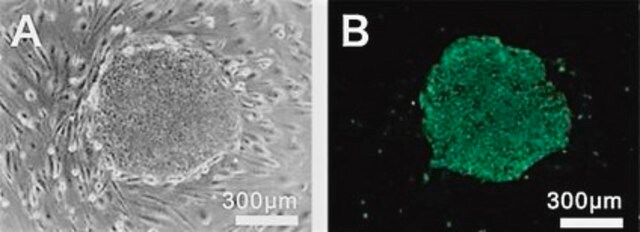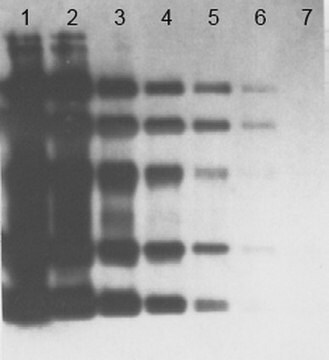おすすめの製品
由来生物
human
品質水準
分子量
calculated mol wt 280.63 kDa
包装
vial of 1 mg
メーカー/製品名
Millipore
成長モード
N/A
テクニック
cell based assay: suitable
flow cytometry: suitable
immunofluorescence: suitable
検出方法
fluorometric
輸送温度
dry ice
保管温度
−20°C
詳細
Nephrotoxicity, or drug-induced kidney injury, is a critical consideration when developing new therapeutics. Screening methods currently used to detect and/or assess nephrotoxicity or other cytotoxicity secondary to candidate compounds may not have the molecular specificity to inform results of screening, as traditional toxicity screens are often limited to simple cell viability, morphology, and mitochondrial function readouts. Common screening assays may furthermore lack sensitivity, detecting only severe nephrotoxicity induced by high doses of or long exposures to tested compounds. Mild toxicity in a cell model may present very differently in vivo, necessitating kidney toxicity assays that are sensitive and specific enough to ensure therapeutic safety.One approach to enhancing the utility of toxicity screening assays is to measure oxidative stress, which is often more sensitive to mild drug injury. While certain indicators of oxidative stress such as increases in reactive oxygen species (ROS) or depletion of reductants are transient, one durable change to kidney (and other) cells is the post-injury carbonylation of cellular biomolecules. 4-trifluoromethyl-7-hydrazinyl-2H-chromen-2-one (TFCH) is intended to enhance sensitivity to cell injury induced by nephrotoxic or cytotoxic substances in renal system applications including in vivo and in vitro models such as Madin-Darby Canine Kidney (MDCK) cells.Spectral Properties Fluorescence images were obtained by λex = 405 nm and emission at 550 to 650 nm.ReferenceMukherjee, et al. "A Novel Fluorogenic Assay for the Detection of Nephrotoxin-induced Oxidative Stress in Live Cells and Renal Tissue." ACS Sensors 6 (2021): 2523-2528.
アプリケーション
Purity: > 98% confirmed by HPLC. Identification confirmed by HNMR, LC-MS and elemental analysis.
特徴および利点
Fluorescent live cell probe for visualizing oxidative stress, cytotoxicity, nephrotoxicity from candidate compounds and other substances.
物理的形状
Lyophilized. Yellow solid.
保管および安定性
Store at -20°C, desiccated and protected from light.Note: Centrifuge vial briefly to collect contents at bottom of vial before opening
その他情報
Live cell fluorescent imaging
法的情報
BioTracker is a trademark of Merck KGaA, Darmstadt, Germany
免責事項
Unless otherwise stated in our catalog or other company documentation accompanying the product(s), our products are intended for research use only and are not to be used for any other purpose, which includes but is not limited to, unauthorized commercial uses, in vitro diagnostic uses, ex vivo or in vivo therapeutic uses or any type of consumption or application to humans or animals.
シグナルワード
Warning
危険有害性情報
危険有害性の分類
Eye Irrit. 2 - Skin Irrit. 2 - STOT SE 3
ターゲットの組織
Respiratory system
保管分類コード
11 - Combustible Solids
WGK
WGK 3
適用法令
試験研究用途を考慮した関連法令を主に挙げております。化学物質以外については、一部の情報のみ提供しています。 製品を安全かつ合法的に使用することは、使用者の義務です。最新情報により修正される場合があります。WEBの反映には時間を要することがあるため、適宜SDSをご参照ください。
Jan Code
SCT240:
試験成績書(COA)
製品のロット番号・バッチ番号を入力して、試験成績書(COA) を検索できます。ロット番号・バッチ番号は、製品ラベルに「Lot」または「Batch」に続いて記載されています。
ライフサイエンス、有機合成、材料科学、クロマトグラフィー、分析など、あらゆる分野の研究に経験のあるメンバーがおります。.
製品に関するお問い合わせはこちら(テクニカルサービス)







